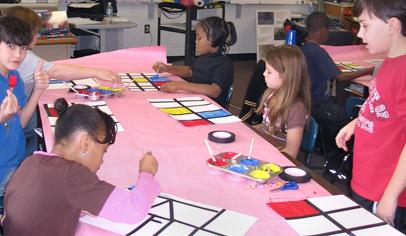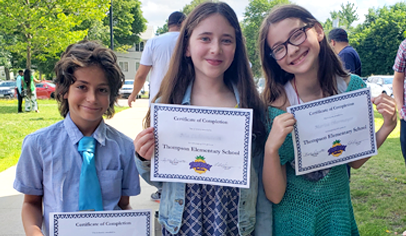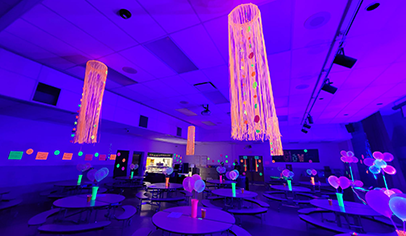When school budgets are cut, the art curriculum is often among the casualties. A program run by PTOs in West Bloomfield, Mich., helps bridge the gap. It allows parents to bring art education into the classroom even if they have no formal art training.
Art Smart, an in-class art appreciation program, exposes children to well-known art and artists through hands-on learning. “For most of our little ones, Art Smart is the first exposure they have to recognizable artists and specific styles,” says Sally Drummond, principal of Gretchko Elementary in West Bloomfield. “It’s a great program.”
The inspiration for the Art Smart program came from an outline developed by the Birmingham Bloomfield Art Center, an arts outreach organization based in Birmingham, Mich. Over a period of 10-plus years, Art Smart has been honed into a systematized, PTO-run project at Scotch and Gretchko elementaries.
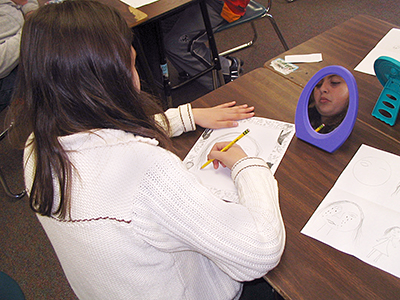
How Art Smart Works
Art Smart is an in-class art appreciation program developed and delivered by trained volunteers. The mission of Art Smart is to:
Expose the students to famous artists or artwork they are likely to encounter in their daily lives.
Foster a sense of appreciation for and critical thinking about each artist or artwork.
Help the students understand why the art is notable.
In a typical school year, the Art Smart committee offers three or four 30- to 45-minute sessions. Each session focuses on one artist or specific piece of art. The session includes a short lecture, discussion, and a simple hands-on activity that reinforces the lesson. The students also receive a handout about the artist to take home. Parent volunteers do all the work, including research, project design, materials procurement, class scheduling, and in-class presentation. For each session, presenters visit each classroom in the school over the course of a week.
The typical Art Smart presentation consists of two parts: a lecture with discussion and a simple hands-on activity. Depending on the complexity of the activity, one volunteer can usually handle each class. To ensure that all volunteers are fully prepared for the presentation, it is good to hold a group training session before each Art Smart week. At Scotch Elementary, one person would perfect the presentation and conduct it in front of the other volunteers, simulating the classroom experience and teaching the group about the artist at the same time. These training sessions help you deliver a consistent, high-quality program for every child in every class, regardless of who is doing the presenting.
The best presenters engage the students with their enthusiasm and secure knowledge of the material. The best presenters also ask open-ended questions that help the students develop a sense of art appreciation and critique. For example, a presenter might ask the class why they think Mondrian used only primary colors or why Monet’s work tends to look blurry.
Although the basic program is straightforward, Art Smart can be as creative as you want. Special activities at Scotch have included creating a 50-foot mural in the style of Diego Rivera, making clay sculptures in the style of Henry Moore, and dressing 5,000 square feet of chain-link fence in fabric in the manner of Christo, the environmental artist.
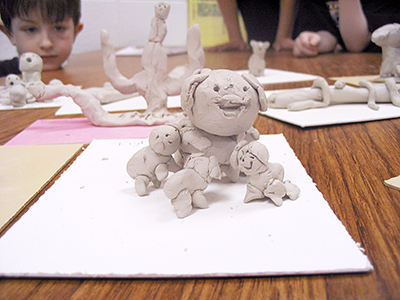
While the most visible aspect of Art Smart is the in-class presentation, volunteers are busy with important work behind the scenes, as well. Someone must develop the presentation packet and secure the visual aids for each artist/artwork. Depending on what works best for your Art Smart committee, that research might be done by the committee chair exclusively, or it could be distributed to several committee members, with each person focusing on one of the year’s artists. Someone also must be responsible for scheduling the presentations and communicating with the teachers and volunteers.
Benefits of Art Smart
One of the most appealing aspects of Art Smart is that it is truly an educational program run by the PTO. When run with the full support of the principal and art teacher, Art Smart allows the PTO to provide an educational experience that would not be possible otherwise. “The kids get a lot out of Art Smart, and they really remember what they learn,” says Jennifer Prew, who has coordinated the Art Smart program at Gretchko Elementary. “It is so important for them to know the great masters so they are well-rounded and cultured.” Prew typically aligns her Art Smart programs with stories or poems that extend the lesson even further.
Art Smart also encourages students to recognize famous art used in unusual ways, helping them connect the art to their daily lives. For example, Grant Wood’s American Gothic is frequently parodied in common culture. Students who have participated in an Art Smart program about American Gothic are quick to identify the farmer and his spinster daughter depicted on everything from T-shirts to pretzel packaging.
Parents who volunteer to conduct Art Smart presentations also benefit from the experience. Denise Littlejohn, a volunteer at Scotch Elementary, says, “I love being a part of Art Smart because I am able to take something I have a passion for and bring it to the classroom.”
Former Scotch Elementary principal Jeremey Whan agrees, noting that “Art Smart engages parents in a completely different way” from the usual PTO projects. Usually, the volunteer presenters learn as much about the artist and artwork as the students. This benefit tends to attract repeat volunteers year after year. Art Smart is also a great way for working parents to get involved in the classroom. Since the programs are scheduled far in advance and require only about an hour total per class, working parents often can fit Art Smart into their workday.
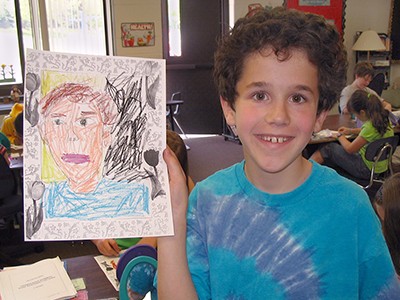
Finally, as PTO projects go, Art Smart is inexpensive. For each presentation, the committee needs to purchase just one or two visual aids, typically large posters. Supplies for the associated hands-on activity are also required, but most can be reused in the future.
Scotch, over time, has purchased colored pencils, markers, paints, and oil pastels, most of which have lasted for several years. The supplies were purchased from the PTO budget rather than relying on the art class to provide them. Based on the experience at Scotch, an elementary school of about 350 students could run four Art Smart programs for about $1 per student per year.
Challenges of Art Smart
Compared with some common PTO projects like a family carnival or silent auction, Art Smart is a fairly easy program to administer. However, there are a few challenges that you should be prepared to handle if you adopt the program.
The biggest challenge to offering an in-class program is fitting it into the school schedule. Class time is precious. Some schools have eliminated extra recesses or cocurricular subjects to allow the teachers more time to focus on core content. Special activities such as field trips or assemblies also disrupt the routine.
Ideally, each Art Smart program is scheduled, schoolwide, for one full week. Every classroom should get its presentation at a time least disruptive to its day while not overlapping with another classroom. Therefore, it is important for the Art Smart committee to have the full support of the principal. The Art Smart chairperson and principal should work together to identify the best weeks and best detailed day-by-day schedule to make the program run as smoothly as possible.
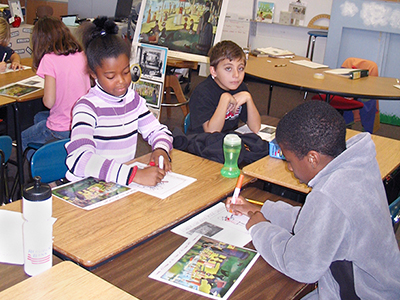
Art Smart is not a canned program; you customize it to fit your school. Therefore, your committee must decide which artists or artwork to feature each year. Faced with thousands of years of art history, you might feel overwhelmed trying to select three or four themes. Even though a painting like the Mona Lisa or an artist like Norman Rockwell might seem overexposed and trite, they make great Art Smart programs for your young audience.
The precise schedule of an Art Smart week reassures the volunteers of the time commitment required. And since there are only three or four presentations per year, the preparation for the presenters is minimal. Art lovers in your parent community will be especially drawn to volunteer. Just be sure when you recruit members for this committee that you emphasize the unique aspects of Art Smart, and you will develop a team that signs on year after year.
If your PTO is looking for a new way to enhance the educational environment at your school, consider developing an Art Smart program. With minimal financial investment, a small group of enthusiastic volunteers, and support from your principal, your PTO can get the program off the ground. From the start, your Art Smart volunteers will provide a unique learning experience that creates lifelong memories for your students.
Sample Art Smart Programs
Grant Wood’s American Gothic (1930)
Show examples of how this famous painting is used in parody. The students create their own parody in a drawing.
Georges Seurat’s Sunday Afternoon on the Island of La Grande Jatte (1886)
Teach about pointillism and the details in the painting. The students create their own mini pointillist pieces with bingo daubers on paper.
Piet Mondrian’s Composition With Red, Blue, and Yellow (or any similar) (1930)
Teach about modernism and minimalism. The students paint their own Mondrian using the three primary colors plus black.
Leonardo da Vinci’s Mona Lisa (1506)
Teach the history of the most famous painting in the world. The students draw their own version, or sketch in their own background behind Mona Lisa on a worksheet.
Katsushika Hokusai’s The Great Wave off Kanagawa (1830s)
Teach about the art of Japanese woodblock printing, Mount Fuji, and Hokusai’s lifelong effort to capture it in art. The students simulate woodblock printing using foam trays, paint, and construction paper.
Michelangelo’s Sistine Chapel (1512)
Teach about the effort and technique required to fresco the chapel. The students imitate Michelangelo by drawing on paper taped to the bottom of their desks.
Claude Monet, any of his works (1840-1926)
Teach about Monet and impressionism. The students try their hand at impressionism by sketching a still life with oil pastels.
Pablo Picasso’s Girl With Red Beret (1910s)
Teach about Picasso and cubism. The students simulate Picasso’s style through a collage made from pictures of facial features.
Jacob Lawrence, multiple works (1917-2000)
Teach about the influential African-American artist. The students mimic his style using oil pastels or paint.
Norman Rockwell, multiple works (1894-1978)
Teach about Rockwell’s life, illustration as art, and Americana. The students create their own Saturday Evening Post cover illustration on a worksheet preprinted with the masthead.
Which Artists To Feature: 9 Questions
Would you consider this artist “really famous”?
Are the children likely to see this artist’s works in their daily lives?
Can we get posters at a reasonable price or reuse posters we already have?
Can we readily find biographical material about the artist?
What kind of hands-on activity would complement this artist?
Can we complete the program within budget?
Can we align with school themes?
Do we have a good mix of artists/styles for the year?
Is there a compelling, unique reason to select this artist?
Originally posted in 2011 and updated regularly.


